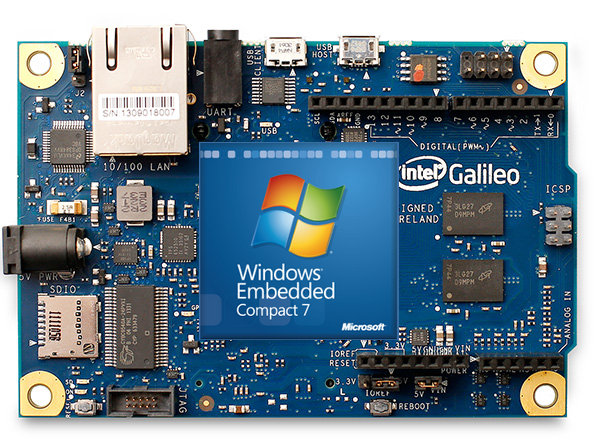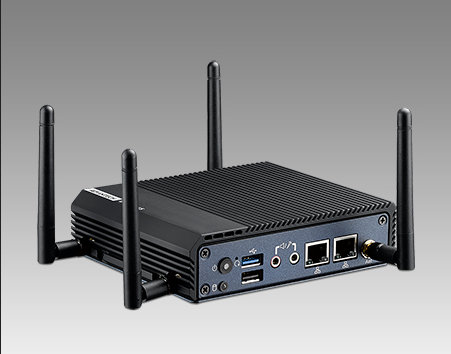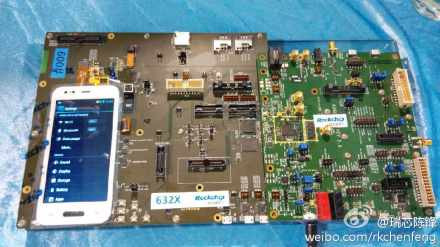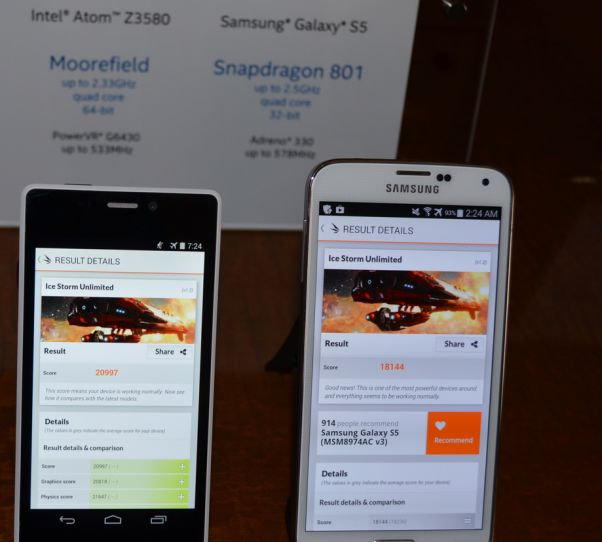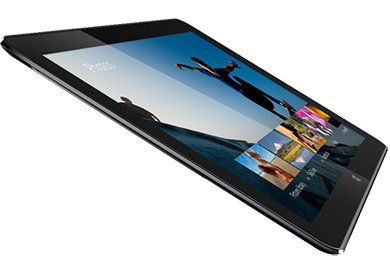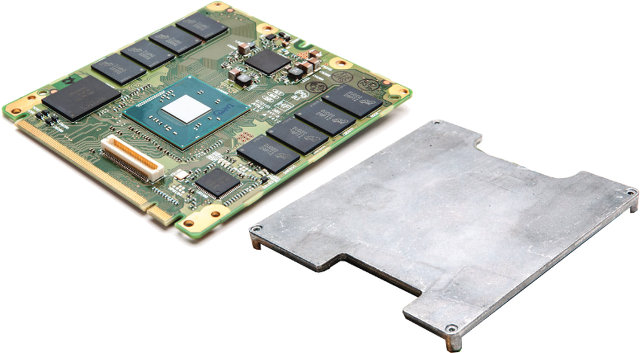As many of us are waiting for our Intel Galileo board promised by Microsoft, and right after the Raspberry Pi foundation announced the Raspberry Pi Model B+, Intel has introduced a new version of the Galileo board which they simply call Galileo Gen 2. The development board is still powered by Intel Quark single core SoC (Pentium class) and with the same key features as the original Galileo Board, but with some tweaks based on the feedback from the community. Intel Galileo Gen 2 specifications (Changes in Bold): SoC- Intel Quark SoC X1000 single core, single-thread application processor @ 400 MHz, with 12KB embedded SRAM System Memory – 256MB DDR3, 5 Storage – 8MB NOR fklash, 8KB EEPROM, and micro SD card slot (up to 32GB) Connectivity – 10/100M Ethernet USB – 1x USB 2.0 host port, 1x micro USB 2.0 device port used for programming Debugging / Programming 10-pin […]
Microsoft is Giving Away Intel Galileo Arduino Compatible Boards to Developers
Microsoft has already launched several initiatives to reach the maker movement and app developers with .NET Gadgeteer supported by platform like Bambino 200, as well as Intel Shark Cove development board for Windows development. The company has now launched a website called windowsondevices.com where they currently have a signup page for developers to send a kit based on Intel Galileo, an Arduino compatible board powered by Intel Quark processor. There’s currently very little information on the software and documentation part of the development kit, but there are links to Visual Studio Express, Windows Embedded’s Internet of Things page, and a link to Maker Faire, so it gives what the kit will be for. Apparently they’ll send the kit to selected candidate whether “you are an experienced Windows developer looking to jump into the Internet of Things or you are new to Windows development and want to build the next big […]
Advantech UTX-3115 Rugged Fanless Computer Powered by Intel Atom E3826 SoC Supports Intel Intelligent Systems Framework
Advantech UTX-3115 is a rugged low power fanless computer powered by Intel Atom “Bay Trail-I” E3826 dual core processor and lots of various ports that can be used as a digital signage, for machine or factory automation, & “smart IoT gateway”, and that happens to be supported by Intel’s Intelligent Systems Framework (ISF). Before checking out Intel ISF, let’s go Advantech UTX-3115 hardware specifications: SoC – Intel Atom E3826 dual core processor @ 1.46 GHz with 1MB L2 cache and Intel HD graphics. System Memory – 2 x 204-pin SO-DIMM DDR3 1333/1066MHz, up to 16GB Storage – 2.5″ bay for HDD or SSD storage Video Output 1x HDMI up to 1080p60 1x micro HDMI up to 1080p60 1x VGA up to 2560 x 1600 @ 60Hz Dual channel LVDS up to 1920 x 1200 @ 60Hz (shared with micro HDMI) Connectivity – Dual Gigabit LAN (LAN1: Intel I210AT, LAN2: Realtek […]
Development Board with Intel Technology Developed by Rockchip
Just a quick post to show an interesting, yet unavailable development board. A few weeks ago, Intel and Rockchip announced a collaboration to design Intel Atom Sofia x86 SoC for mobile devices. Apparently, they did not waste any time, and have already done some nice work together, as Chen Feng, VP at Rockchip, posted the picture of the development board on his weibo account with a short description that Google’s translate as: You can now showed up, Intel inside, the world’s most highly integrated 6321 smartphones and tablet communications solutions, dual-core WCDMA SOC, integrated WIFI BT GPS PMU, all two chips It’s not entirely clear if it’s directly related to the announced Intel Atom “Sofia” using 3G (WCDMA) however. The 6321 is a dual core processor, but Rockchip and Intel only announced working on quad core processors, so this may be a separate product for example an ARM SoC with […]
Linux 3.15 Released
Linus Torvalds announced the release of Linux Kernel 3.15 last Sunday: So I ended up doing an rc8 because I was a bit worried about some last-minute dcache fixes, but it turns out that nobody seemed to even notice those. We did have other issues during the week, though, so it was just as well. The futex fixes and cleanups may stand out, but as usual there’s various other random fixes since rc8 in there too: mainly drivers (drm, networking, sound, usb etc), networking, scheduling and perf tooling. But it’s all been fairly small and quiet, which *may* of course be due to the fact that last week was also the first week of the merge window for 3.16. That might have distracted some developers. I’m not entirely convinced I liked the overlap, but it seemed to work ok, and unless people scream really loudly (“Please don’t _ever_ do that again”) and give good […]
Intel Atom Z3580 MooreField SoC Shown to Outperform Qualcomm Snapdragon 801 in Graphics Benchmark
This is not exactly an independent benchmark, as Intel provided the results showing an Intel Atom Z3580 SoC with PowerVR G6430 @ 533 MHz outperform a Snapdragon 801 with Adreno 330 GPU @ 578 MHz (Galaxy S5) in FutureMark’s 3DMark benchmark by 20997 to 18144, or a little over 15%. We’ve seen several CPU benchmarks before where Intel often has a edge over ARM based solution, but the previous generation with Intel Graphics was a bit weak on the graphics side, and this test seems to confirm, the new Intel smartphone SoC should provide very good graphics performance. It appears Atom Z3580 might have also outperformed Snapdragon 805 with Adreno 420, as Anandtech reported an overall score of 19,698 in 3Dmarks with Qualcomm Snpadragon S805 mobile development platform (MDP), and noticed it was not the most GPU intensive test there is. So it’s still possible the higher score found on Intel’s […]
Intel Showcases Tablet / 2-in-1 Reference Design based on 14nm “Broadwell” Core M SoC
Intel has unveiled a thin tablet reference design at Computex 2014, in Taiwan, which is based on their upcoming “Broadwell” Core M processor manufactured using 14nm process technology, which will be the most power efficient Intel Core processor to date. Intel fanless mobile PC reference design features a 7.2mm thick, 12.5″ tablet that weights 670 grams. You can also connect it to a media dock providing additional cooling allowing more performance, as well as a keyboard dock. Intel expects 2-in-1 products (tablet + laptop) based on Intel Core M to be available later this year. Intel claims 60% lower power dissipation, 20 to 40% better performance, and 10 to 45% low SoC power, and half the package footprint compared to third generation “Haswell” Core processors, which will allow fanless and thin designs. Currently Mobile Haswell Core processors have a maximum TDP of 11.5W to 47W, so in theory, at best, Broadwell SoCs might achieve […]
Intel Unveils In-Vehicle Solutions and Development Kit for Assisted Driving and Autonomous Cars
Intel has announced their In-Vehicle Solutions (IIVS) for automakers comprised of hardware based on Intel’s industrial Bay Trail Atom 3800 series SoC, and software solutions relying on a Linux based operating system but it’s not clear whether it might be Wind River Linux, Tizen IVI, or another new OS. The solutions will first provide In Vehicle Infotainment (IVI) with assisted driving features such as , and over time it will allow semi-autonomous and self-driving cards. At the heart of the system, Intel will provide CM1050 computer-on-module that will be part of a development kit including a chassis with CAN, Ethernet, and USB ports, as well as audio and CVBS multimedia I/Os, and radios and antennas for FM, AM, DAB, GPS, WiFi, Bluetooth, and cellular. A Blu-ray drive, and SSDs will be available as storage options. The complete system is designed to be upgradeable, and automakers can expected modules with faster […]



